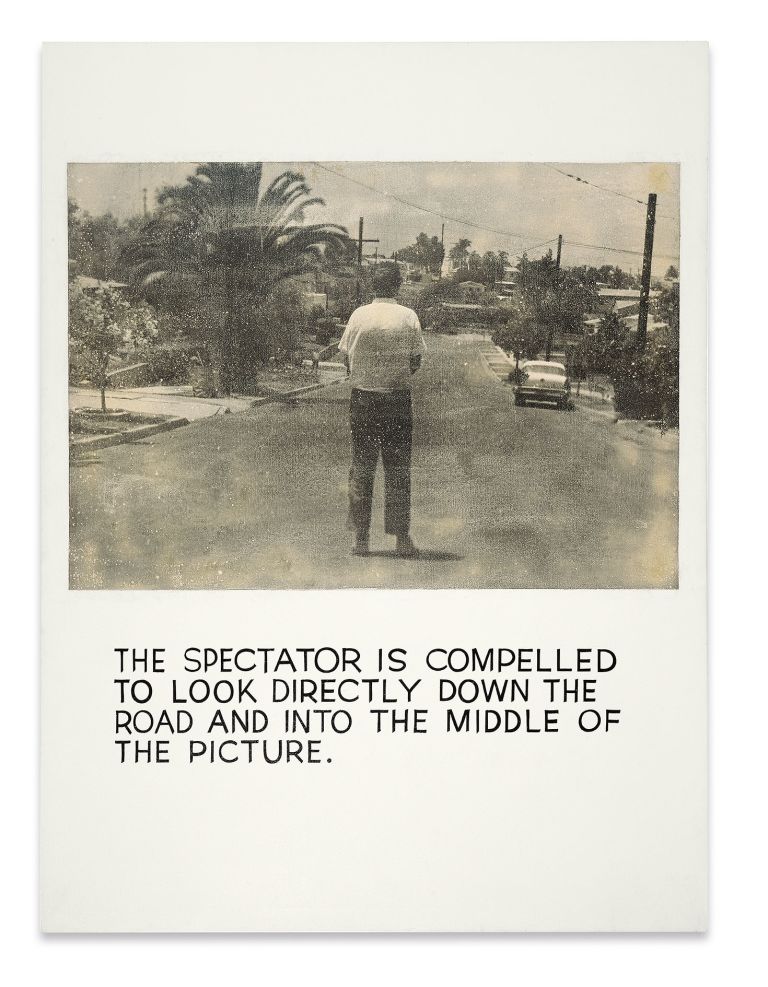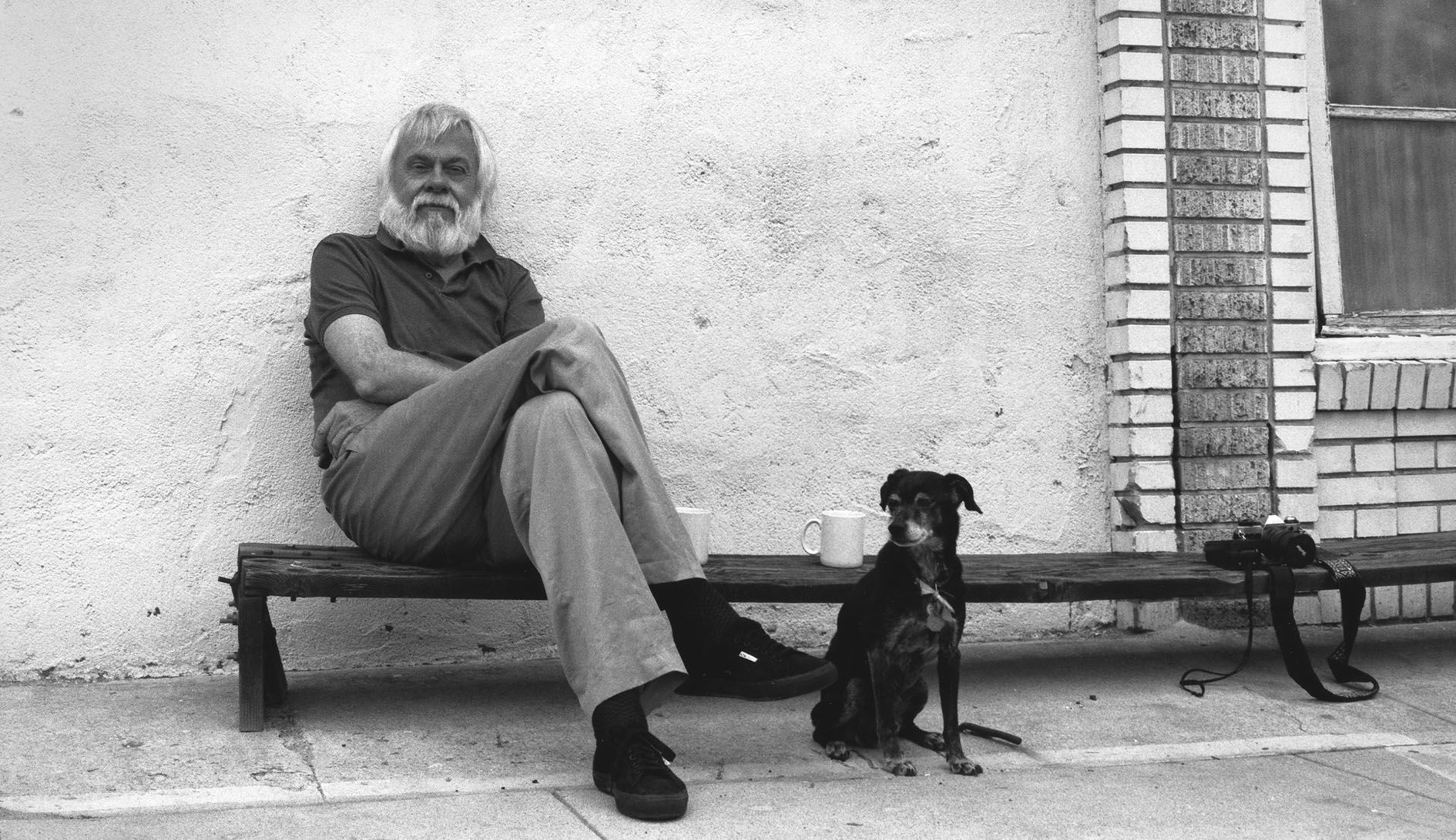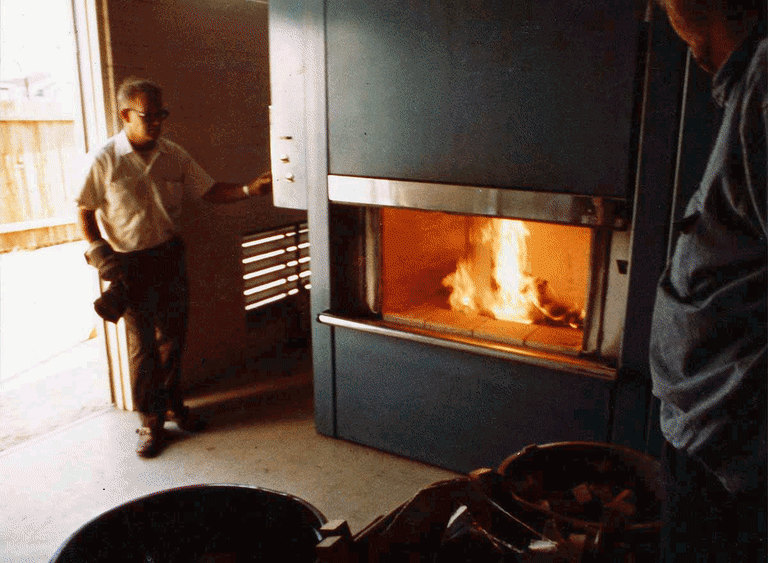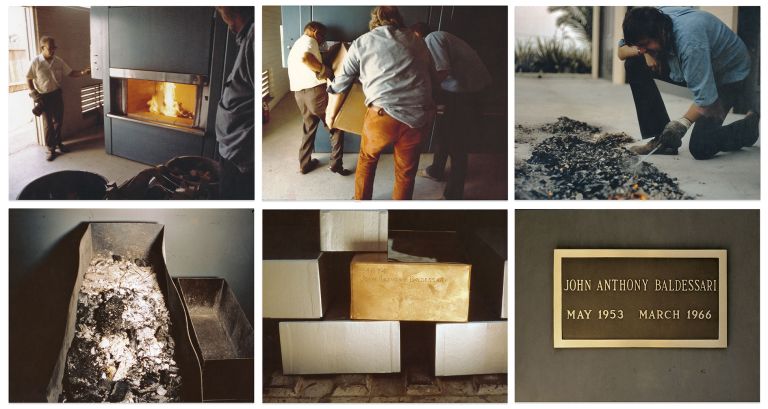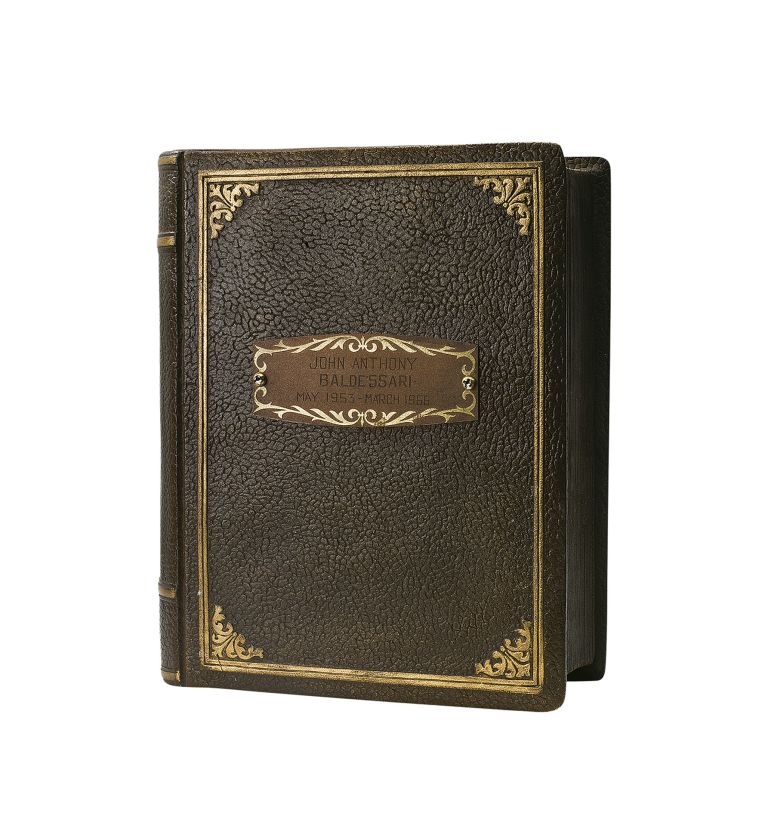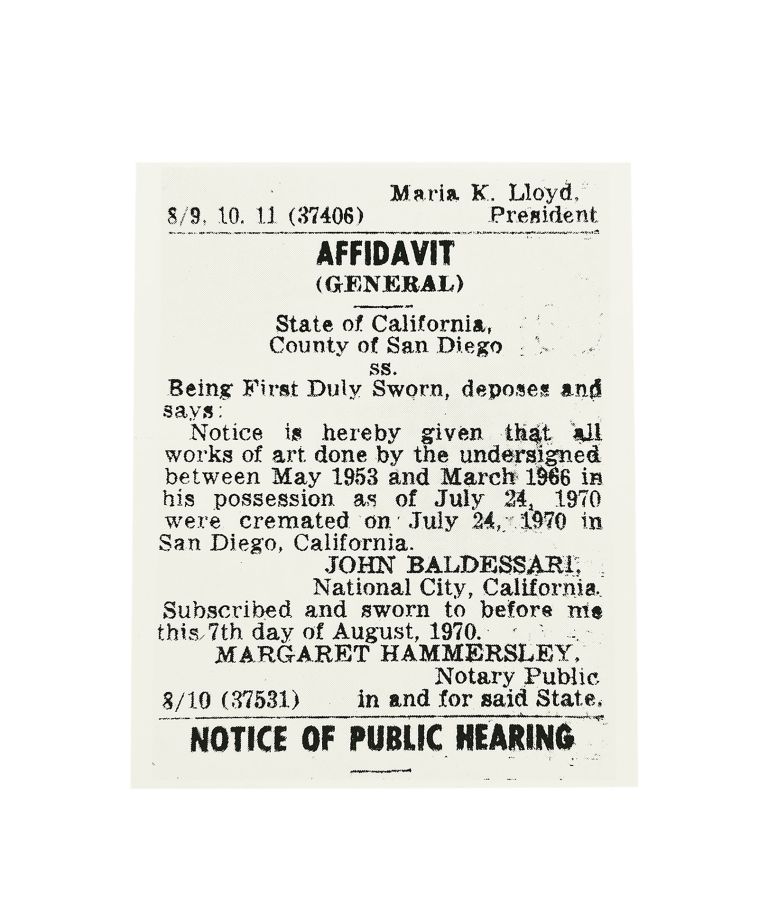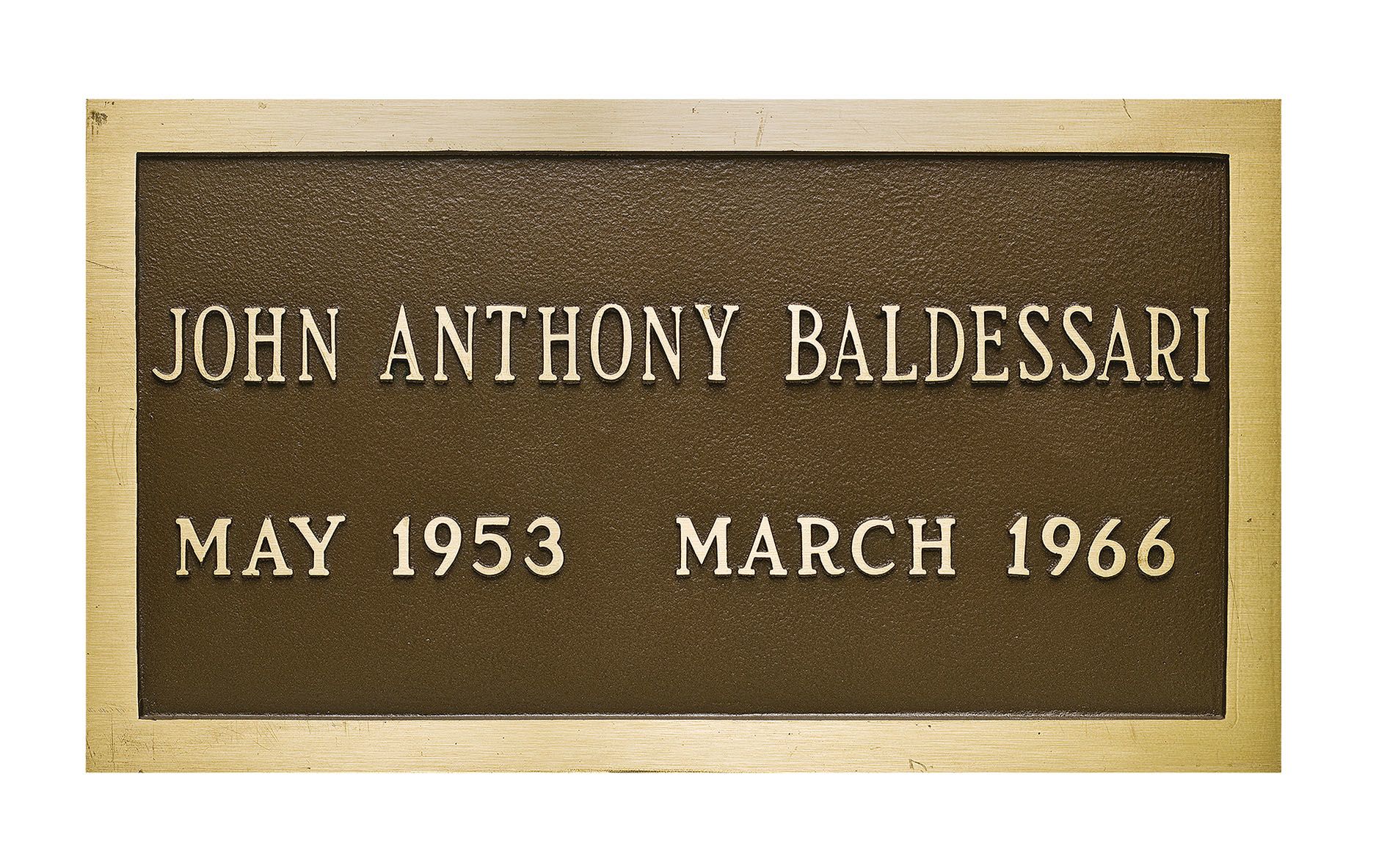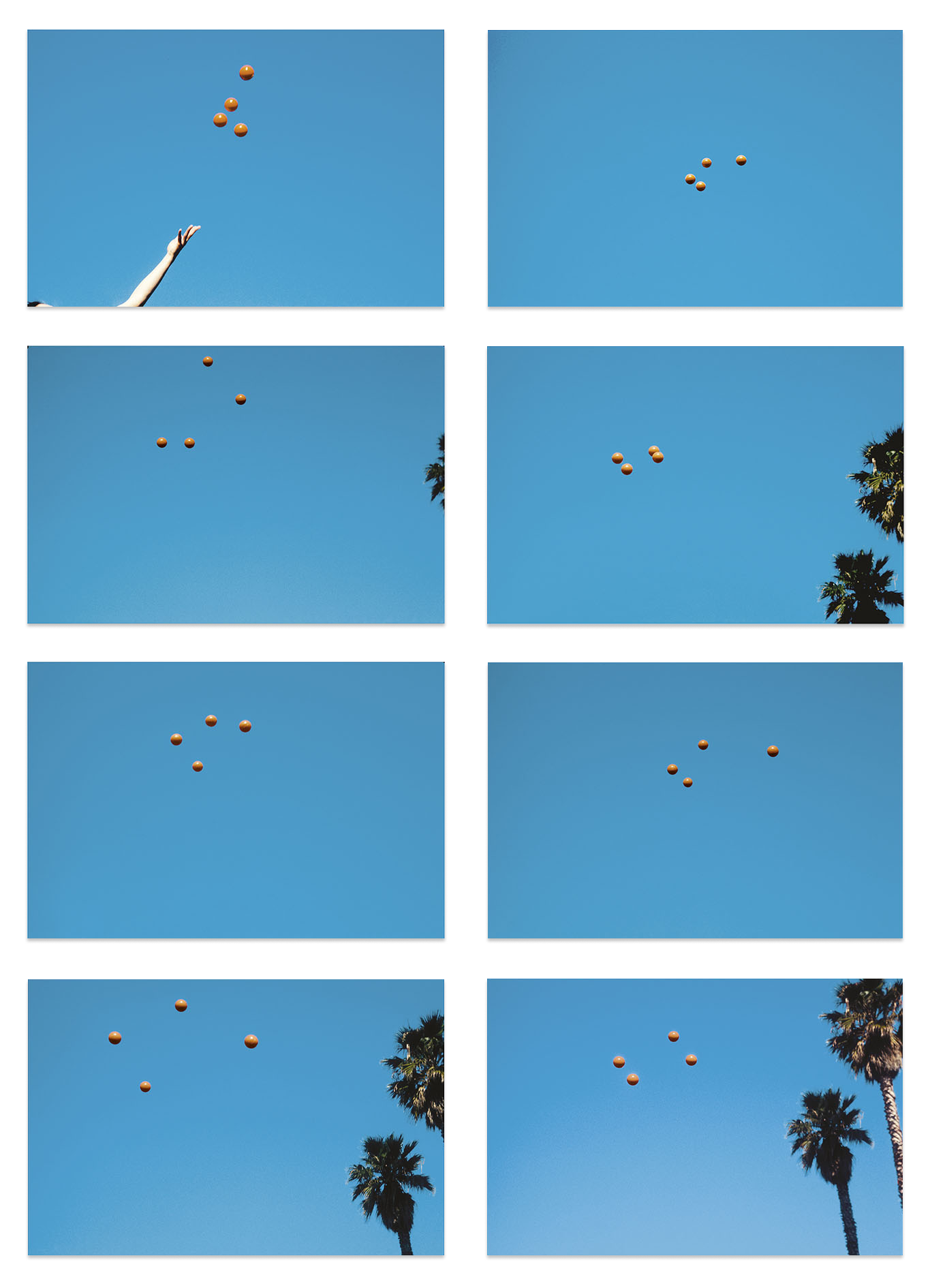Baldessari had over two hundred solo exhibitions of his work in his lifetime, and over one thousand group exhibitions worldwide. Major traveling retrospectives include Pure Beauty, which opened at Tate, London in 2009 and traveled to Museum of Contemporary Art, Barcelona, Los Angeles County Museum of Art, and Museum of Modern Art, New York. He was also featured in Documenta V (1972) and VII (1982), Carnegie International (1985–86), Whitney Biennial (1983 and 2009), and the 47th Venice Biennial (1997) and 53rd Venice Biennial (2009), where he was honored with the Golden Lion for lifetime achievement. In 2012 he was awarded the Kaiserring Goslar, and in 2015 he received the National Medal of Arts from the National Endowment for the Arts. His works are housed in the collections of public institutions worldwide, including The Metropolitan Museum of Art, New York; Museum Ludwig, Cologne; Museum of Modern Art, New York; Tate, London; Van Abbemuseum, Eindhoven and Yokohama Museum of Art.
John Baldessari’s legacy is unparalleled for its impact on generations of artists, art historians and thinkers, not only through his wide-ranging work but also his many years of teaching and mentorship. The gallery looks forward to extending that legacy alongside the Estate in the years to come.
